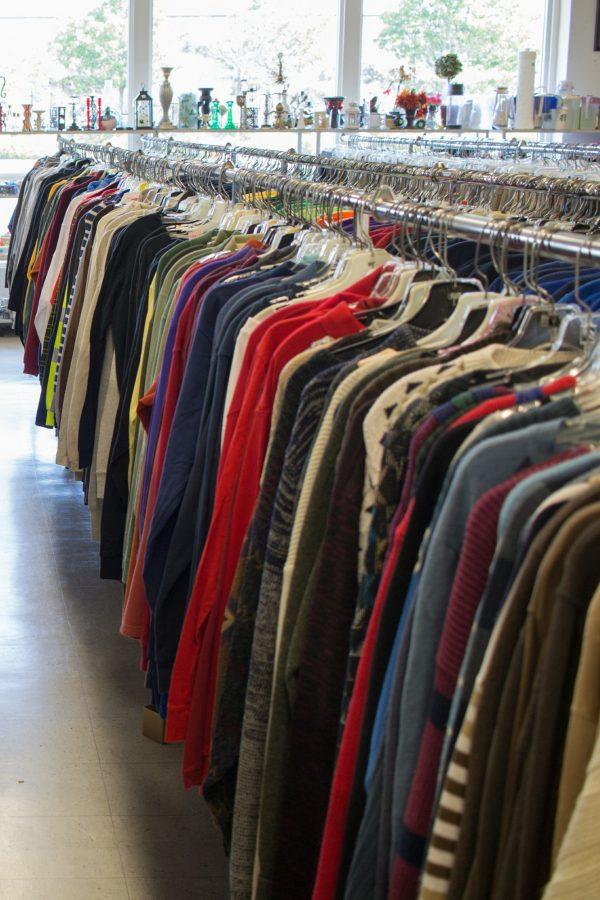Reduce, reuse and recycle your mom’s jeans
Andrew Avilla/The Skyline View
Thrift shopping is a great way to customize styles in addition to saving money.
While sifting through my closet of overly priced turtlenecks and “vintage” flannels from Urban Outfitters, I came to the realization that I’ve been flushing money that could have been used on over-priced textbooks down the toilet.
As I stared into the black hole I call my closet, I still had an itch to buy more.
Instead of doing the usual by heading to the closest Forever 21, I took a detour and hit the jackpot at my local thrift shop.
Upon arriving at Goodwill, my eyes widened at the sight of the unruly organization of stained furniture, and my nose scrunched at the smell that was omitting from the clothing racks. After getting over my privileged self, I headed for one of the racks, a rainbow assortment of discounted sweatshirts.
I went in looking for sweaters, but came out with more than planned.
In my arms, I had a pair of mom jeans, a grandpa sweater, an ugly cardigan that looked fresh out of the 1990 television show “Fresh Prince of Bel Air,” and a black turtleneck that made me feel like a pretentious art student. All together, the damage came out to about $21.
Now, imagine if I had gone into Forever 21 and bought the same items. I’d be paying the same price as a Biology textbook, the class lab manual, and a few packs of Scantron sheets.
People dread the word “thrift shopping” thanks to Macklemore, but it’s anything but just a catchy word from a song.
With tuition prices rising across the nation, by 13 percent in 2015 alone, as reported by the College Board, it’s a good idea to stop spending $50 a week on sweaters.
Thrifting isn’t just for “poor people,” it’s a trend that will continue to gain popularity in the years to come.
According to the National Association of Retail and Thrift Shops (NARTS), about 16-18 percent of Americans shop at thrift stores in any given year. For consignment shops, it’s 12-15 percent.
The number of people thrifting is slowly increasing, leading to happy wallets and a happy environment.
While buying more clothes may not seem like you’re helping the Earth, you are.
Resale and reusing clothes reduces waste and pollution. For every clothing item purchased at a resale store, one less item is produced in a factory.
This means less energy, and less burning of toxic oils like petroleum. Recycling clothes reduces the amounts of carbon footprints and it reduces the amounts of clothing going into our landfills.
If you’re still on the fence about resale clothing, think of it this way: fashion is constantly recycled.
Take a look at mom jeans. Several years ago, girls wouldn’t be caught dead wearing high-waisted, blue denim tapered jeans. Now, teenagers are on the hunt for the perfect pair.
And what’s a better way to find cheap, legitimate and vintage mom jeans than going to a local Goodwill or a high quality resale store like Wasteland?






